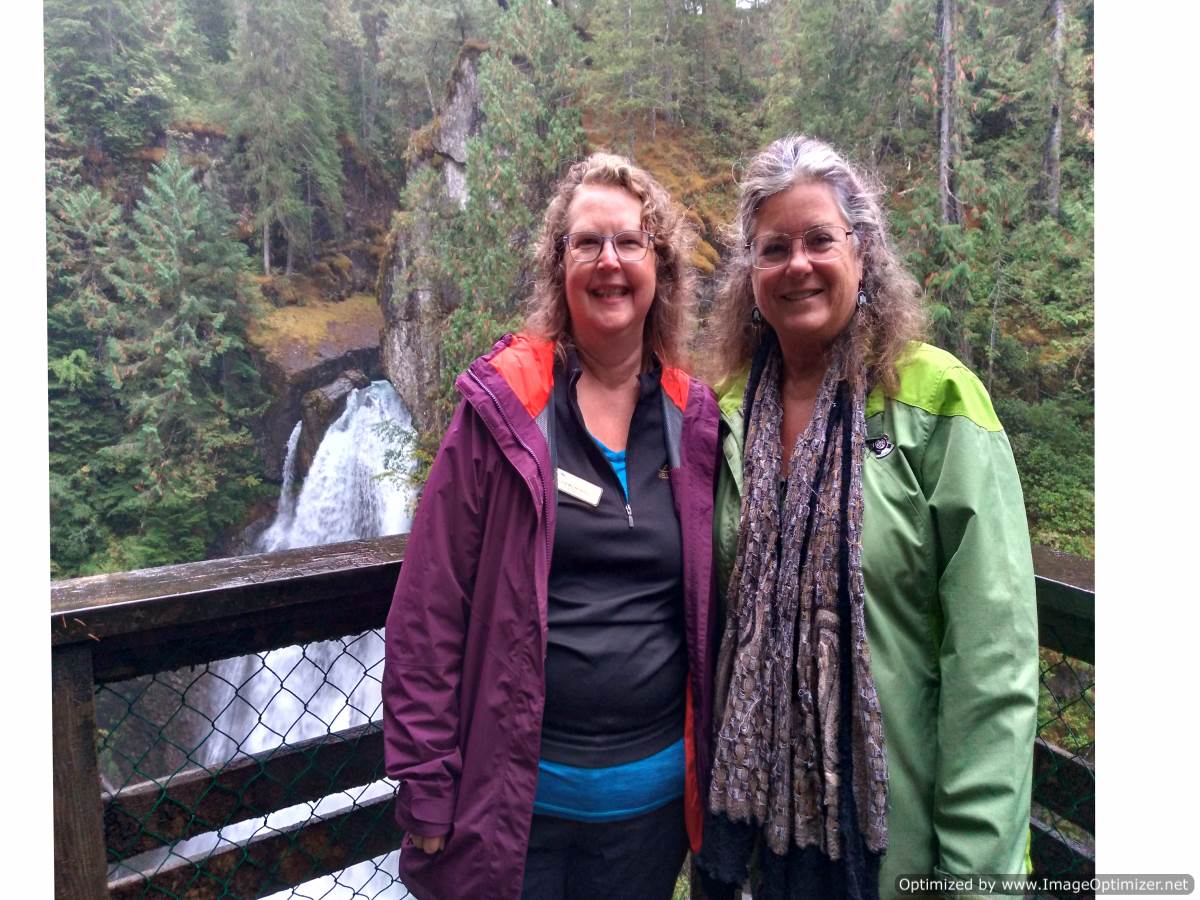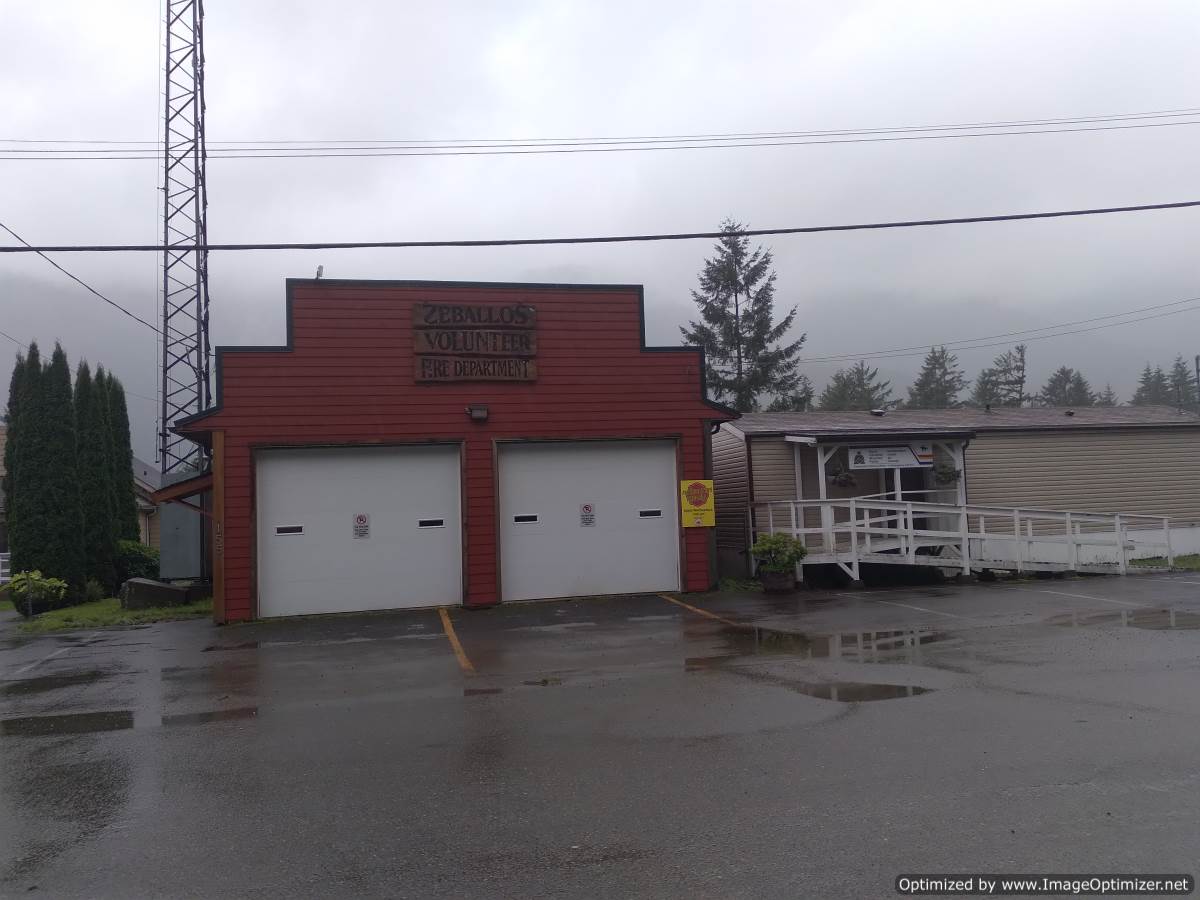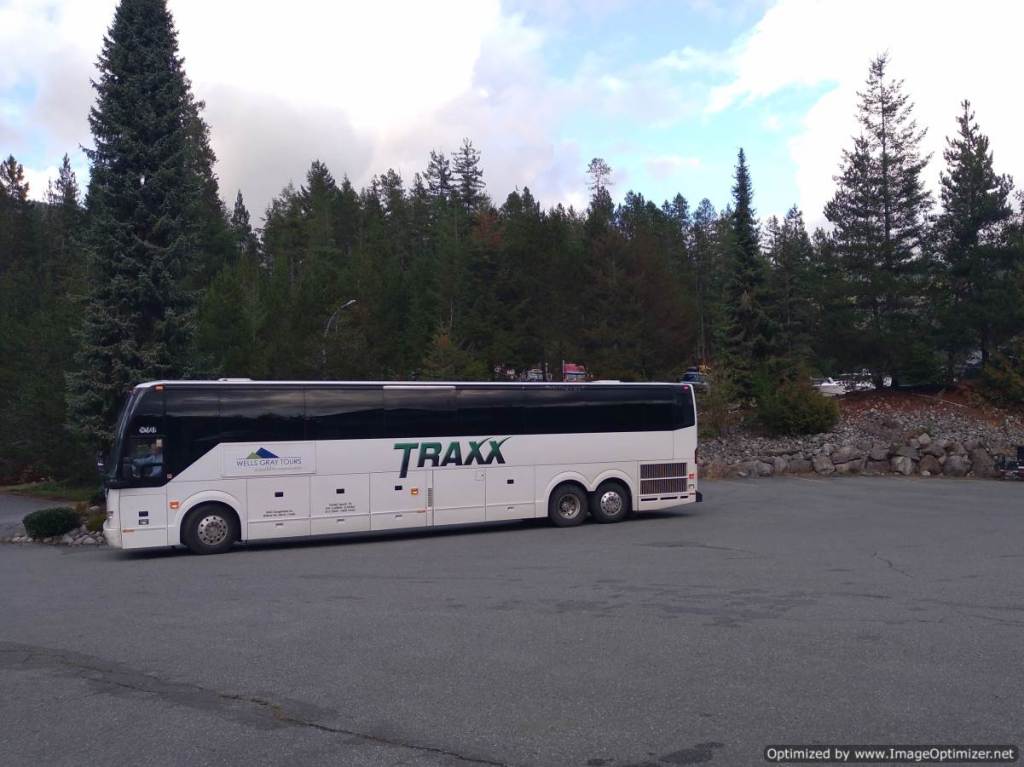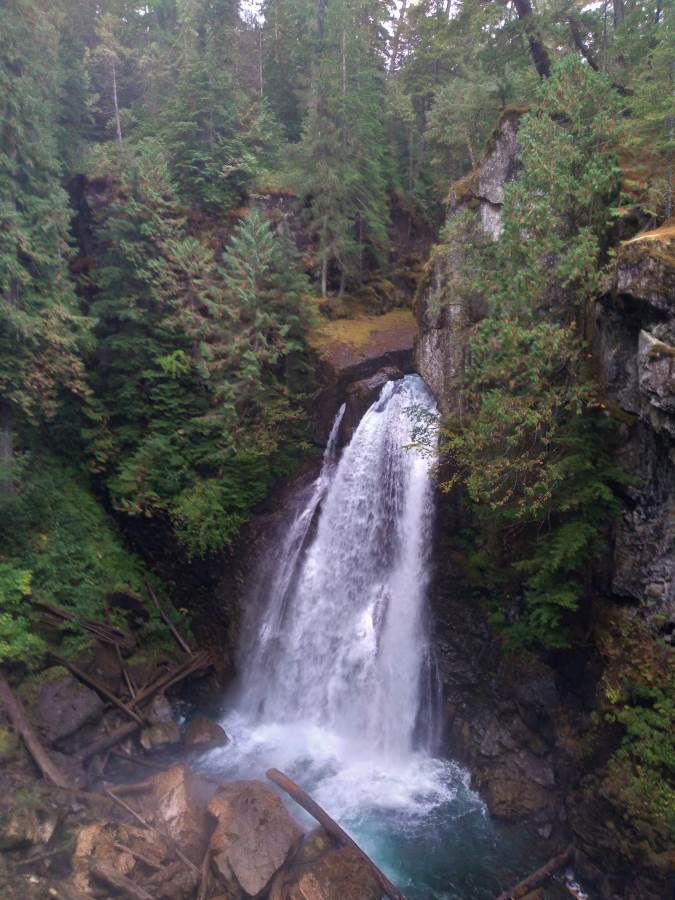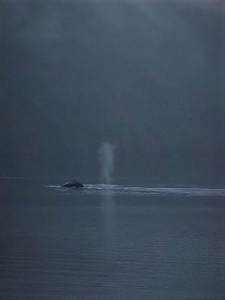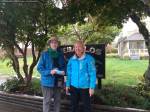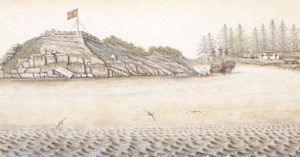I had the pleasure of joining a Wells Gray tour as the accompanying historian for two separate groups on an inaugural tour to Zeballos from Gold River and back via the famous Uchuck III coastal freighter from September 19-21. I joined the first group in Campbell River on Sunday the 19th and boarded the Wells Gray tour bus with Steve at the helm and Marion as the tour director.
We drove along the Gold River Highway (28) paralleling the Campbell River which is busy in the fall with fishermen hoping to catch salmon that come up the river this time of year to spawn. I pointed out the Haig-Brown Heritage House, the former home of renowned conservationist, fisherman and writer Roderick Haig-Brown who established himself and his wife Ann there in the late 1930s. Numerous guests on the tour were very familiar with this passionate thinker who recognized the need to protect fish habitat and wilderness well before environmentalism came into vogue.
We then passed the entrance to Elk Falls, that was harnessed in 1948 for its hydro-electric potential – an event which served as a catalyst for the installation of a pulp and paper mill north of Campbell River, leading to the town’s growth. In fact, the history of the Campbell River region is closely tied to the three dam system in the watershed that starts at Buttle Lake in Strathcona Provincial Park and flows through the two Campbell Lakes, the John Hart Reservoir and the Campbell River to the sea.
On our approach to Strathcona Provincial Park, we first encountered Strathcona Park Lodge and Outdoor Education Centre – in business since 1959, that is renowned for the excellent outdoor programs and comfortable cabins by the lake it offers; not to mention, a spectacular view into the Elk River Valley.
Once within the Park, our driver stopped at the Lupin Falls trailhead, and all disembarked from the bus to take the moderate twenty minute loop walk to see Lupin Falls – a pretty falls in the midst of a scenic rainforest of tall cedars and Douglas firs, with intense hues of green and orange-red on this overcast day. Once we were back on the bus, I explained the history of Strathcona Park, and how it came to be established, as well as some of the controversy that plagued the Park over the years during periods when it was open to industry. I also discussed the exciting archaeological finds at Buttle Lake made in 2019 of over 1000 artifacts left by Indigenous hunters such as arrowheads, probably about 10,000 years ago.
Next stop was Lady Falls, that is a more challenging trail due to its incline, with a very lovely, gushing falls at the end of the trail. Then on to Gold River, for a great dinner at the Ridge Pub and a good stay at the Ridge Motel, where the owners and staff very efficiently moved all 42 of us and our luggage to our rooms.
The next morning, back on the bus and on our way to the dock, I discussed the history of Gold River, an ‘instant’ town created to house workers at the 1965 pulp and paper mill being built then, next to a Muchalaht village site. At the dock we boarded the Uchuck III, a converted minesweeper that has been servicing this stretch of the west coast as a freighter for six decades. In the coastal mist, we cruised west up the Muchalaht Inlet that once was home to the Muchalaht people who hunted and fished in this area for thousands of years. The Muchalaht eventually merged with the Mowachaht of Nootka Sound to form one band, who are members of the Nuu-Chah-Nulth Council of 14 west coast nations.
When we reached Bligh Island at the mouth of the inlet, I described European exploration to the area and how the island was named for William Bligh, famously of HMS Bounty who was Master aboard Captain James Cook’s ship the Resolution, when it landed at the island in 1778 to affect a repair. It was this unintentional landing and meeting with the Mowachaht people that lead to Cook’s crew procuring sea otter pelts, that dealers in Canton months later paid a surprisingly high price for. Once news spread of the value of these pelts, the Sound was inundated with traders – Americans, British and Spanish who vied for control over the trade. Chief Maquinna of the Mowachaht controlled this trade at his end, a trade that lasted until about 1810, when the population of sea otters dwindled.
Our voyage took us up north into the Tahsis Inlet where all were thrilled to encounter a mother Humpback with her calf. We witnessed a breach by the calf – an exciting moment! Then, heading west at Tahsis Narrows and on past Ceepeecee, once site of a pilchard reduction plant, and next Esperanza, where the Nootka Mission Hospital was located until 1974, we entered Hecate Channel, continued on to the Zeballos Inlet and cruised north until we reached the village of Zeballos.
On board Bev, who spent her early childhood in Zeballos told us about her father Hedley Vickers, who built the Zeballos Hotel during the settlement’s gold rush of 1938 to 1942. The hotel is now called the Zeballos Lodge. Bev disembarked with our first group and in town, met her sister Gail who was with the second tour group of 30, who had been to Telegraph Cove whale watching. En route to Zeballos, the bus had a flat tire. Tour director Lisa explained that the group were intended to have their boxed lunch on the bus that had to go for repairs at a local heavy duty mechanic’s garage. There was nowhere to sit and eat, however Village staff came to the rescue and hosted the grateful Wells Gray tour group in the Village office building. This group then came on board the Uchuck.
We then reversed our trip, spotted the Humpbacks again, and arrived back at Gold River at 5:00pm. The Wells Gray tour bus and driver Jason met us there and took us to the Ridge Motel. In the morning, we travelled Highway 28 to Campbell River with the same stops in Strathcona Park as the day before, and said ‘farewell’ in the early afternoon.
This inaugural trip was extremely enjoyable and it is hoped will be repeated in upcoming years. Thanks to the good people at Wells Gray, the crew of the Uchuck III (Captain Spencer, Dave and others) and Laurie who worked non-top preparing all our meals. Also, the staff at the Ridge Pub and Ridge Motel for great service. I felt privileged to be on the trip and to accompany the groups as historic interpreter. Pictured below is our approach to Zeballos, Mist on the Inlet, historic Zeballos buildings and tour director Lisa with me at Lady Falls.
Good news!! The trips are on again starting September 18, 2022. Visit Wells Gray Tours website for details https://www.wellsgraytours.com/



